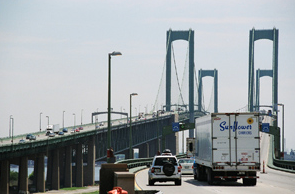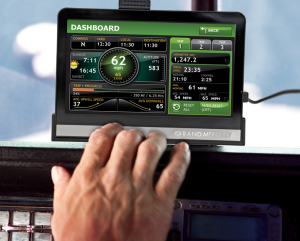New Guidelines from Federal Motor Carrier Safety Admin on GPS Use
 Courtesy of Bloomberg by Bernard Kohn: The U.S. Transportation Department will require global-positioning system training for new commercial drivers and offer guidelines for existing operators to reduce the number of trucks and buses striking bridges.
Courtesy of Bloomberg by Bernard Kohn: The U.S. Transportation Department will require global-positioning system training for new commercial drivers and offer guidelines for existing operators to reduce the number of trucks and buses striking bridges.
The Federal Motor Carrier Safety Administration announced the program today at a Southern State Parkway bridge on New York’s Long Island that’s been struck 27 times by trucks too tall to travel on the road. U.S. Senator Charles Schumer, a New York Democrat, led efforts to get more training for drivers.
“These steps will help to once again make GPS devices an asset to drivers, and not a dangerously misused tool,” Schumer said.
Truckers following faulty GPS directions have hit bridges in New York City, Long Island and Westchester County more than 200 times a year since 2005, Schumer said.
About 80 percent of the bridge strikes in New York, where parkways built decades ago with low overpasses are supposed to be closed to commercial traffic, are caused by drivers being misdirected by GPS devices onto roads they shouldn’t enter, Schumer said. Even if roads are well-marked, GPS devices may not note restrictions for trucks and buses, he said.
 U.S. regulators believe truckers are using navigation systems for passenger cars instead of ones written for big rigs and buses, Duane DeBruyne, an FMCSA spokesman, said. The agency wants commercial drivers to use devices listing route restrictions such as bridge heights, he said.
U.S. regulators believe truckers are using navigation systems for passenger cars instead of ones written for big rigs and buses, Duane DeBruyne, an FMCSA spokesman, said. The agency wants commercial drivers to use devices listing route restrictions such as bridge heights, he said.
“Even one truck or bus striking an overpass is one too many, which is why we’re taking action,” FMCSA Administrator Anne Ferro said in a statement.
GPS
The FMCSA will begin distributing GPS training recommendations, including how to select professional-grade navigation systems, instructions on how to input truck sizes and axle weights, and tips on avoiding distracted driving, Schumer said.
In addition, the agency will require GPS training for new operators seeking commercial-driver certification, Schumer said. That will be included later this year in a regulation Congress required in last year’s surface transportation law.
 Many truck drivers who end up on parkways with restrictions on commercial traffic are relying on consumer GPS units, and some use Google Inc.’s Google Maps, according to a September 2011 report by the New York State Department of Transportation.
Many truck drivers who end up on parkways with restrictions on commercial traffic are relying on consumer GPS units, and some use Google Inc.’s Google Maps, according to a September 2011 report by the New York State Department of Transportation.
In New York suburbs such as Westchester County and Long Island, bridges over roads such as the Hutchinson River and Saw Mill River parkways may have clearances of less than 10 feet. In New York City, 110 bridges were struck in 2010 and 2011. On Long Island, 94 bridges were struck during the same period, Schumer said.
Repairs on the Long Island Expressway alone due to truck- bridge accidents have cost $4.1 million, Schumer said. In addition, the state has spent $3 million for 300 bridge warning signs, he said.
According to Transportation Department data, there were 15,000 bridge strikes by all types of vehicles in the U.S. in 2010, resulting in 214 deaths and 3,000 injuries.
Category: Fleet Diagnostics & Software, General Update, Safety, Transit News










